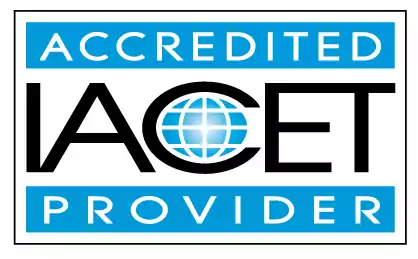Define and identify common signs and behaviors of children and youth with Autism Spectrum Disorder.
Identify common signs and behaviors of children and youth with Autism Spectrum Disorder and conduct disorder. Gain valuable insights into the characteristics of these conditions and their impact on early childhood education and child care centers.Trainings incorporating this outcome
CDA Subject Areas
Proficiency Level
Target Audience
Topic Areas
States
Alabama (8) Alaska (8) Alberta (14) Arizona (7) Arkansas (3) Australia (8) British Columbia (2) California (8) Colorado (8) Connecticut (8) Delaware (8) District of Columbia (7) Florida (7) Georgia (7) Hawaii (8) Idaho (8) Illinois (3) Indiana (8) Iowa (8) Jamaica (6) Kansas (7) Kentucky (3) Louisiana (8) Maine (7) Manitoba (6) Maryland (14) Massachusetts (8) Michigan (8) Minnesota (6) Mississippi (8) Missouri (2) Montana (8) Nebraska (6) Nevada (4) New Hampshire (7) New Jersey (3) New Mexico (8) New York (4) Newfoundland and Labrador (8) North Carolina (4) North Dakota (7) Nova Scotia (4) Ohio (7) Oklahoma (7) Ontario (4) Oregon (7) Pennsylvania (6) Prince Edward Island (4) Puerto Rico (7) Quebec (4) Rhode Island (7) Saskatchewan (8) South Carolina (2) South Dakota (8) Tennessee (2) Texas (8) Thailand (6) United Kingdom (6) Utah (7) Vermont (8) Virgin Islands (6) Virginia (8) Washington (8) West Virginia (8) Wisconsin (6) Wyoming (5)
120 hours courses
102 hours courses
45 hours courses
30 hours courses
6 hours courses
5 hours courses
3 hours courses
2 hours courses
Related Outcomes
- Define and identify common signs and behaviors of children and youth with conduct disorder.
- Define and identify common signs and behaviors of children and youth with hemophilia.
- Define and identify common signs and behaviors of children and youth with cerebral palsy.
- Define and identify common signs and behaviors of children and youth with anxiety.
- Define and identify common signs and behaviors of children and youth with developmental disabilities.
- Define and identify common signs and behaviors of children and youth with ADHD.
- Define and identify common signs and behaviors of children and youth with fragile x syndrome.
- Define and identify common signs and behaviors of children and youth with fetal alcohol syndrome.
- Define and identify common signs and behaviors of children and youth with hearing loss.
- Define and identify common signs and behaviors of children and youth with depression.
- Identify appropriate practices for identify and demonstrate an children: Identify examples of appropriate activities for different ages
- Identify common mental health disorders in children and the importance of early intervention.
- Explain how autism spectrum disorder affects play behaviors, sensory preferences, and communication development.
- Identify appropriate practices for identify and demonstrate an children: Define Developmentally Appropriate Practice
- Identify appropriate practices for identify and demonstrate an children: Identify importance of individual planning
- Give examples of ways to apply and model ethical behavior and professional integrity with all children and youth.
- Describe strategies and experiences to promote collaboration between child and youth care professionals and programs and other professionals involved in the care and education of all children and youth.
- Identify the most common sources of stress for young children.
- Identify the signs of traumatic brain injury in infants and young children.
- Identify strategies for the child care provider that will promote successful child development. Identify strategies for working with children with special needs
Related Articles
- Annual Training in Texas
- Child care education
- April is Autism Awareness Month
- Shining a Light on Autism Awareness Month
- Understanding Oppositional Defiant Disorder (ODD) in the Context of Child Care Providers
- Resources and strategies for parents of children with special needs to ensure a successful school year
- Helping Your Child Navigate the Flashbacks and Triggers of PTSD
- Dance It Out: How Movement Therapy Helps Kids Heal Their Minds through Their Bodies
- What They Don’t Tell You About Child Abuse and Neglect Training (But Should)
- 🧩 Early Signs of Autism in Toddlers — What to Watch For 👀
- 🧩 What Does ABA Look Like in the Classroom? 🎓 What Teachers Should Know
- 🧩 How Do I Support a Student with Autism While Managing Classroom Behavior and Learning? 💕
- ❤️ How Do Educators Help Families Access the Services They Need?
- 🧩 How Can You Make Your Classroom More Inclusive for Children with Autism?
- 🪁How Can Play Become a Powerful Tool for Supporting Children with Autism?🧩
- 💛🧩 How Can I Make My Teaching More Inclusive for Children with Autism?
- Recognizing Early Signs of Sensory Processing Challenges
- How to Support Children with Special Needs in Child Care
 12 CEUs
12 CEUs